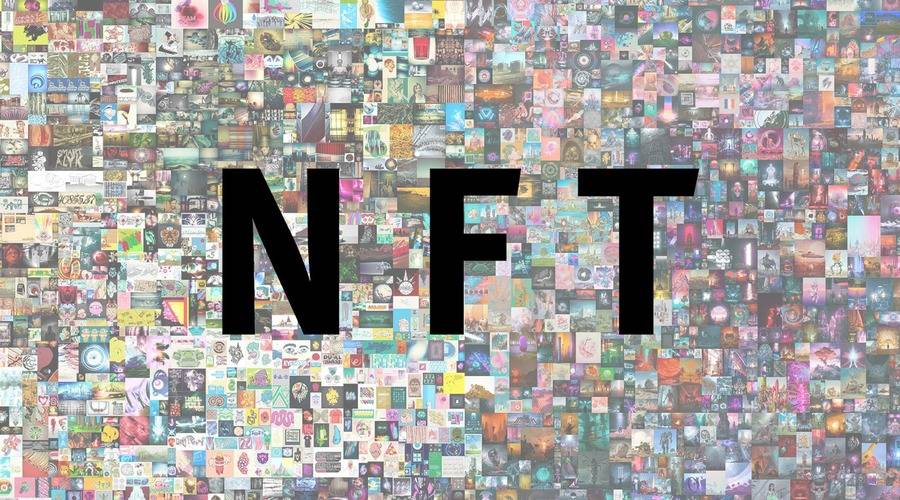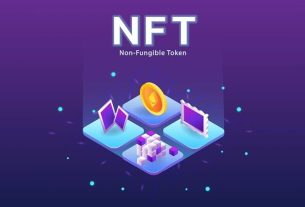In recent years, the world of blockchain technology has witnessed significant advancements, particularly in the field of non-fungible tokens (NFTs). NFTs have gained immense popularity as unique digital assets that can represent ownership of various items such as artwork, collectibles, and even virtual real estate. However, one challenge that arises with NFTs is their limited interoperability between different blockchain networks. This is where cross-chain NFT atomic swaps and escrow mechanisms come into play, enabling seamless transactions and enhancing the usability of NFTs across multiple blockchains.
Introduction
The rise of NFTs has revolutionized the digital art and collectibles market, providing a new medium for creators to tokenize and sell their work. However, the fragmented nature of blockchain networks poses a challenge for NFTs to achieve true interoperability. Cross-chain NFT atomic swaps and escrow mechanisms aim to address this issue by enabling seamless transactions between different blockchain platforms.
Understanding NFTs and Interoperability Challenges
NFTs are unique digital assets that are stored on a blockchain. Each NFT has a distinct value and can represent ownership of a specific item or piece of content. While NFTs have gained significant traction, they are typically associated with a single blockchain network, limiting their transferability and utility across different platforms. Interoperability challenges arise when users want to trade or transfer NFTs between different blockchains.
What are Cross-Chain Atomic Swaps?
Cross-chain atomic swaps refer to the ability to exchange assets between two different blockchain networks without the need for intermediaries. Atomic swaps utilize smart contracts to ensure a secure and trustless exchange of assets. In the context of NFTs, cross-chain atomic swaps enable the transfer of NFT ownership from one blockchain to another while maintaining the unique properties and authenticity of the asset.
The Benefits of Cross-Chain NFT Atomic Swaps
Cross-chain NFT atomic swaps offer several advantages. Firstly, they enhance the liquidity and marketability of NFTs by allowing them to be traded across different blockchain networks. This expands the potential buyer base and increases the chances of finding the right market for a particular NFT. Additionally, cross-chain atomic swaps eliminate the need for centralized exchanges, reducing reliance on third parties and enabling peer-to-peer transactions.
- Enhanced Liquidity: Cross-chain NFT atomic swaps open up new avenues for liquidity by enabling the seamless transfer of NFTs across different blockchain networks. This expands the potential buyer base and increases the chances of finding the right market for a particular NFT.
- Increased Market Reach: With cross-chain atomic swaps, NFTs are no longer restricted to a single blockchain platform. They can be traded and accessed across multiple networks, allowing creators and collectors to tap into larger and more diverse communities.
- Elimination of Centralized Exchanges: Cross-chain NFT atomic swaps eliminate the need for centralized exchanges as intermediaries. Instead, transactions occur directly between users through smart contracts, ensuring a peer-to-peer and decentralized approach. This reduces reliance on third parties and enhances user autonomy.
- Cost Efficiency: By bypassing centralized exchanges, cross-chain atomic swaps minimize associated fees and charges. Users can transact directly, saving on transaction fees and increasing the efficiency of their trades.
- Preservation of Authenticity and Ownership: Cross-chain NFT atomic swaps maintain the unique properties and authenticity of NFTs during the transfer process. The ownership and integrity of the digital assets are preserved, ensuring that the value and provenance of the NFTs are not compromised.
- Enhanced Security: Atomic swaps utilize smart contracts and cryptographic techniques to ensure secure and trustless transactions. The immutable nature of blockchain technology provides a high level of security, protecting participants from fraud and unauthorized access.
- Interoperability: Cross-chain atomic swaps enable interoperability between different blockchain networks. This means that NFTs can be seamlessly transferred and utilized across multiple platforms, increasing their usability and utility.
- Decentralization: With cross-chain atomic swaps, the power and control over NFT transactions shift towards the users. It promotes decentralization and empowers individuals to have direct control over their assets without relying on centralized authorities.
- Improved User Experience: Cross-chain NFT atomic swaps simplify the process of trading and transferring NFTs. They offer a seamless and user-friendly experience, making it easier for creators, collectors, and enthusiasts to engage with the NFT ecosystem.
- Future Scalability: Cross-chain atomic swaps lay the foundation for future scalability of the NFT market. As the industry evolves, these mechanisms will facilitate the growth and expansion of NFTs, supporting a more interconnected and vibrant ecosystem.
In summary, cross-chain NFT atomic swaps bring numerous benefits to the world of NFTs, including enhanced liquidity, increased market reach, cost efficiency, preservation of authenticity, enhanced security, interoperability, decentralization, improved user experience, and future scalability. These mechanisms play a crucial role in expanding the possibilities and unlocking the full potential of NFTs in the blockchain landscape.
Exploring Escrow Mechanisms for NFT Transactions
Escrow mechanisms play a crucial role in facilitating secure transactions, especially in the context of NFTs. Escrow acts as a trusted intermediary that holds the NFT and funds until both parties fulfill the conditions of the transaction. This ensures that both the buyer and seller are protected during the exchange process.
The Advantages of Escrow in Cross-Chain NFT Swaps
In cross-chain NFT swaps, escrow mechanisms add an additional layer of security and trust. By using an escrow service, participants can engage in NFT transactions with confidence, knowing that their assets and funds are protected until the swap is successfully completed. Escrow also mitigates the risks associated with fraudulent or incomplete transactions, enhancing the overall user experience.
- Secure Transactions: Escrow mechanisms provide a secure environment for cross-chain NFT swaps. By acting as a trusted intermediary, escrow ensures that both the buyer and seller are protected during the transaction process, minimizing the risk of fraud or misrepresentation.
- Trust and Confidence: Escrow builds trust between parties involved in cross-chain NFT swaps. It instills confidence in the transaction, as participants know that their assets and funds are held securely until the conditions of the swap are fulfilled. This helps to establish a trustworthy and reliable marketplace for NFT trading.
- Dispute Resolution: Escrow services offer a dispute resolution mechanism in case conflicts arise during the cross-chain NFT swap. If any issues or disagreements occur, the escrow provider can act as a neutral party to mediate and find a resolution, ensuring a fair outcome for both parties involved.
- Protection against Non-Delivery: With escrow, buyers are protected against non-delivery of the NFTs. The funds are held in escrow until the buyer confirms the successful receipt of the NFT, ensuring that sellers fulfill their obligations before receiving payment.
- Simplicity and Convenience: Escrow services simplify the process of cross-chain NFT swaps. Participants can rely on the escrow provider to handle the technicalities of the transaction, such as verifying the authenticity of the NFT and ensuring the correct transfer of funds. This streamlines the overall process and makes it more convenient for users.
- Security of Funds: Escrow ensures the security of funds during cross-chain NFT swaps. Funds are held in a secure escrow account, protecting them from potential hacking or unauthorized access. This provides peace of mind to participants, knowing that their financial assets are safeguarded throughout the transaction.
- Reduced Counterparty Risk: Escrow minimizes counterparty risk in cross-chain NFT swaps. Both the buyer and seller have assurance that their respective obligations will be met before the swap is finalized. This reduces the likelihood of default or non-compliance from either party.
- Facilitates Large-Scale Transactions: Escrow services are particularly beneficial for large-scale cross-chain NFT swaps. The involvement of an escrow provider adds an extra layer of security and trust, making it more viable for high-value transactions to take place.
- Compliance and Regulation: Escrow services help ensure compliance with legal and regulatory requirements in cross-chain NFT swaps. By adhering to industry standards and best practices, escrow providers contribute to a safer and more regulated NFT marketplace.
- Increased Adoption: The advantages offered by escrow in cross-chain NFT swaps contribute to the wider adoption of NFTs. As participants feel more secure and confident in engaging with NFT transactions, the overall adoption and acceptance of NFTs are likely to grow.
In conclusion, escrow mechanisms bring numerous advantages to cross-chain NFT swaps, including secure transactions, trust and confidence, dispute resolution, protection against non-delivery, simplicity and convenience, security of funds, reduced counterparty risk, facilitation of large-scale transactions, compliance and regulation, and increased adoption. Escrow plays a crucial role in ensuring the smooth and secure transfer of NFTs across different blockchain networks, fostering a vibrant and trustworthy NFT ecosystem.

Examples of Cross-Chain NFT Atomic Swaps and Escrow Solutions
Several projects and platforms have emerged to address the interoperability challenges of NFTs through cross-chain atomic swaps and escrow mechanisms. Examples include projects like Chainlink, which provides decentralized oracle services to facilitate secure swaps, and Polkadot, a multi-chain network that enables cross-chain communication and interoperability.
How to Perform a Cross-Chain NFT Atomic Swap
Performing a cross-chain NFT atomic swap involves a series of steps that ensure a secure and trustless exchange. The process typically includes identifying the NFT to be swapped, locking the asset in a smart contract, verifying the transaction details, initiating the swap, and finally completing the transfer on the recipient blockchain. Each step is carefully executed to prevent fraud or unauthorized access to the NFT.
Security Considerations and Trustless Execution
Security is paramount when it comes to cross-chain NFT atomic swaps and escrow mechanisms. Participants must exercise caution and ensure they are interacting with trusted platforms or protocols. Smart contract audits, secure wallet management, and adherence to best practices in blockchain security are essential to safeguarding assets during the swap process. Trustless execution ensures that the swap is performed without the need to rely on third parties, further enhancing security and transparency.
The Future of Cross-Chain NFT Atomic Swaps and Escrow Mechanisms
As the NFT market continues to evolve, cross-chain NFT atomic swaps and escrow mechanisms will play a crucial role in driving interoperability and enhancing user experiences. We can expect to see further advancements in technology and protocols, making it easier for creators and collectors to navigate multiple blockchain networks seamlessly.
Conclusion
Cross-chain NFT atomic swaps and escrow mechanisms offer a promising solution to the interoperability challenges faced by NFTs. By enabling seamless transactions and secure transfers between different blockchain networks, these mechanisms enhance the liquidity, marketability, and overall usability of NFTs. As the blockchain industry continues to mature, we can anticipate further innovations in this space, unlocking new opportunities for creators, collectors, and enthusiasts alike.
FAQs
Q1. How do cross-chain NFT atomic swaps work? Cross-chain NFT atomic swaps utilize smart contracts to enable the secure exchange of NFTs between different blockchain networks. By leveraging cryptographic techniques, these swaps ensure trustless transactions without the need for intermediaries.
Q2. Are cross-chain NFT atomic swaps secure? Cross-chain NFT atomic swaps prioritize security by utilizing smart contracts and cryptographic protocols. However, participants should exercise caution and conduct due diligence to interact with trusted platforms and protocols.
Q3. What are escrow mechanisms in NFT transactions? Escrow mechanisms act as trusted intermediaries in NFT transactions, holding the NFT and funds until both parties fulfill the conditions of the exchange. Escrow enhances security and protects both the buyer and seller during the transaction process.
Q4. Can I trade NFTs across different blockchain networks? Yes, cross-chain NFT atomic swaps enable the trading of NFTs across different blockchain networks. This expands the market reach and liquidity of NFTs, providing more opportunities for creators and collectors.
Q5. What is the future of cross-chain NFT atomic swaps? As the NFT market continues to grow, we can expect further advancements in cross-chain NFT atomic swaps. These innovations will enhance interoperability, simplify transactions, and foster a more connected ecosystem for NFTs.
I’m a best-selling author and leading authority in the world of cryptocurrency. I have been involved in the crypto community since 2012 and have helped numerous startups and organizations on blockchain strategy. I am a regular contributor to Forbes and CoinDesk, and my work has been featured in The Wall Street Journal, Bloomberg, Reuters, and other major media outlets. In addition to writing for publications, I am also a sought-after speaker on cryptocurrency and blockchain technology niches respectively.




